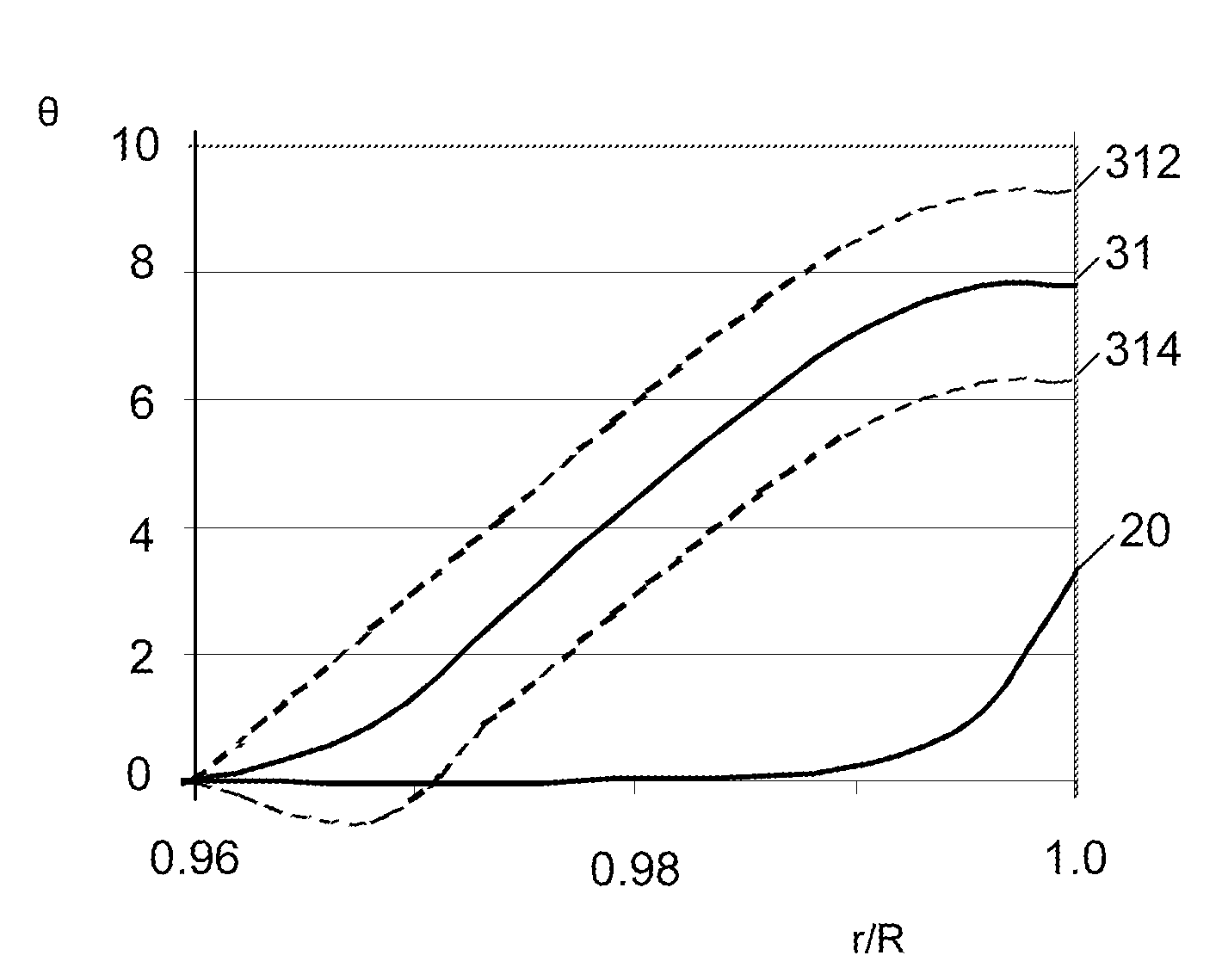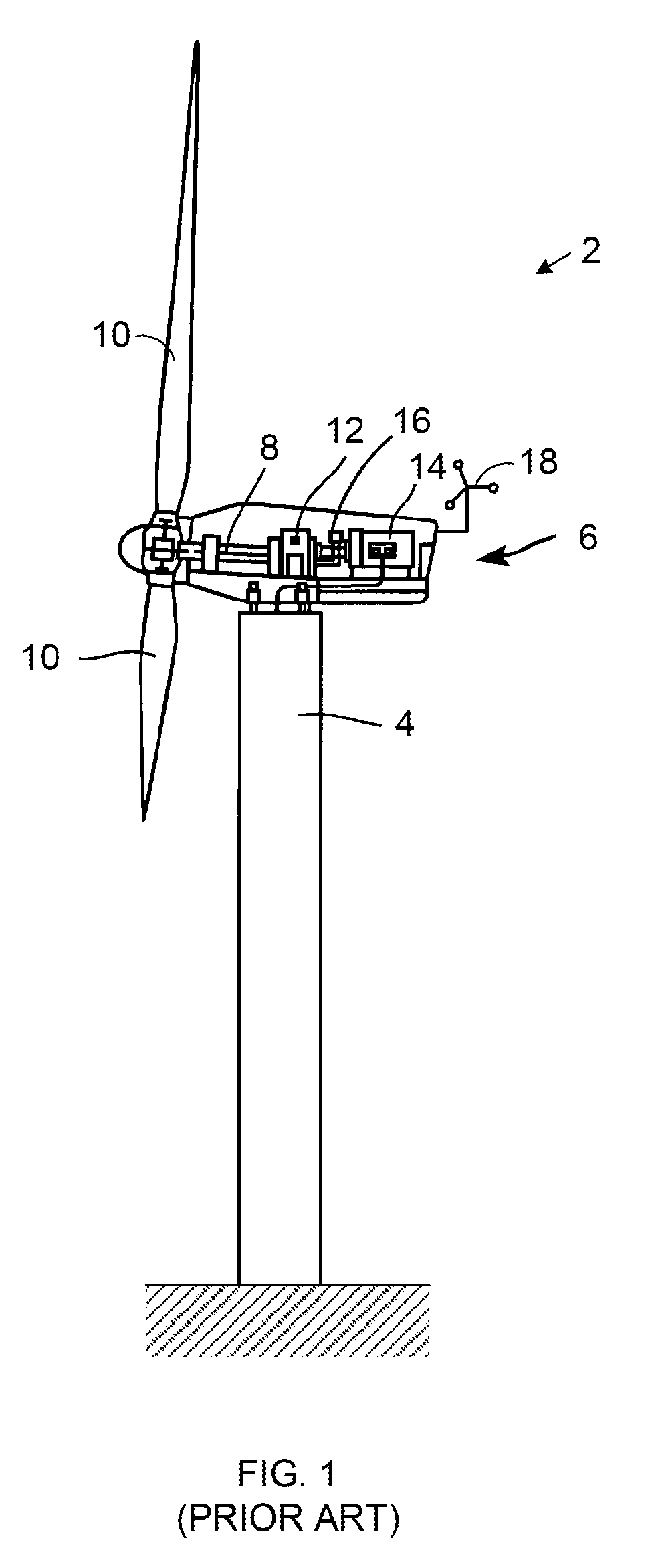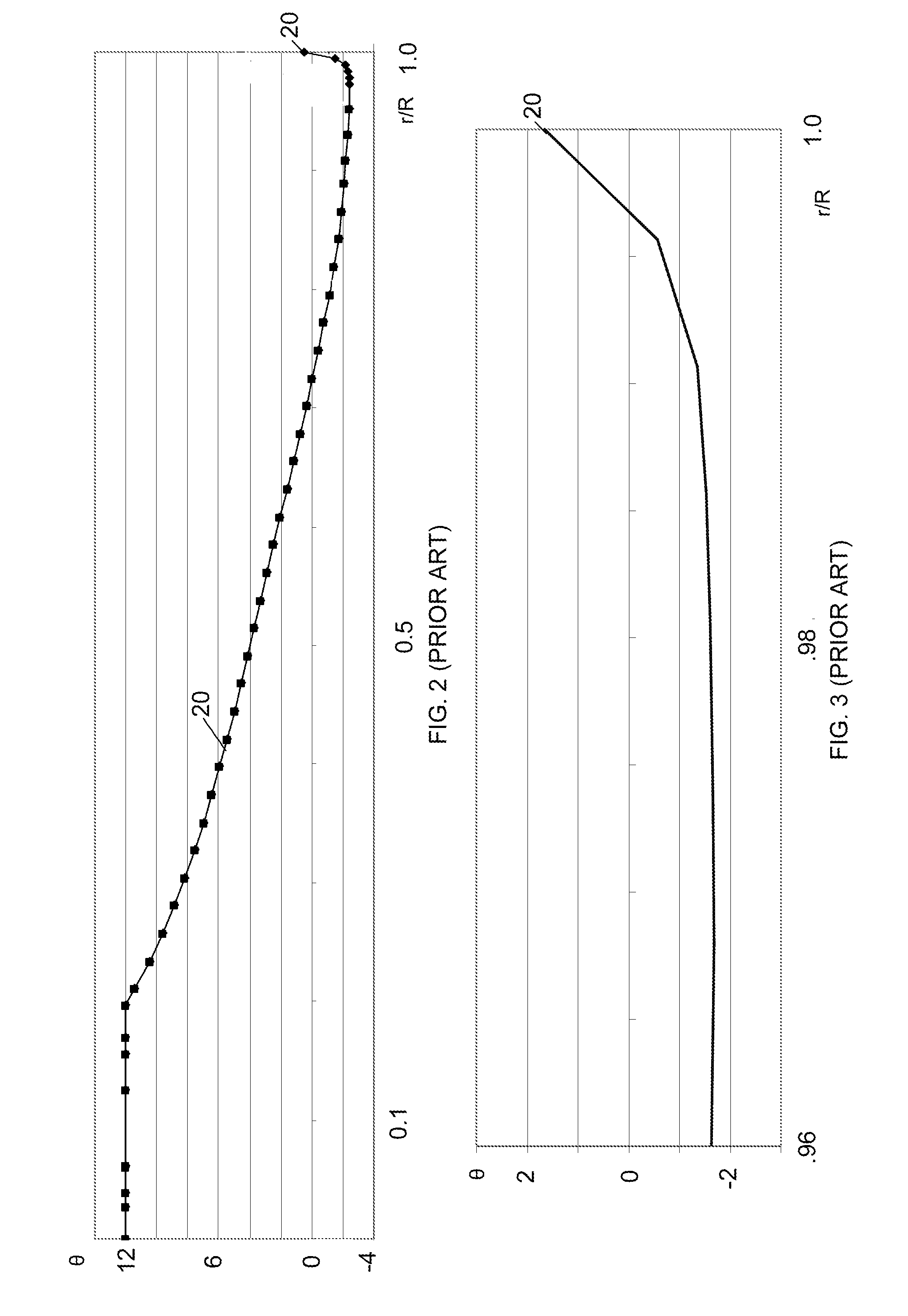Wind turbine blade planforms with twisted and tapered tips
a technology of wind turbine blades and planforms, which is applied in the direction of reaction engines, machines/engines, mechanical equipment, etc., can solve the problems of significant reduction in the power produced by blades
- Summary
- Abstract
- Description
- Claims
- Application Information
AI Technical Summary
Benefits of technology
Problems solved by technology
Method used
Image
Examples
Embodiment Construction
[0030]FIG. 4 is a chart illustrating the conventional blade twist distribution 20 from FIG. 2 along with another blade twist distribution 30. The blade twist distributions 20 and 30 are the same except for in the outer portion of the blade rotor radius near the tip of the blade 10 where the illustrated twist distribution 30 generally corresponds to the following numerical data:
r / Rθ - 300.952128−2.409790.973404−0.289830.9787230.9995730.9840432.2920610.9893623.4212590.9946814.22078814.52427
In comparison to the conventional twist distribution 20, the outer portion of the distribution 30 includes a larger total backward tip twist than the corresponding portion of the conventional twist distribution 20. The tip twist portion of the distribution 30 may also be used with other blades, including blades having other inboard twist distributions. The twist distribution 30 may also be pitched.
[0031]The outer tip twist portion of the twist distribution 30 may also take a variety of other forms. ...
PUM
 Login to View More
Login to View More Abstract
Description
Claims
Application Information
 Login to View More
Login to View More - R&D
- Intellectual Property
- Life Sciences
- Materials
- Tech Scout
- Unparalleled Data Quality
- Higher Quality Content
- 60% Fewer Hallucinations
Browse by: Latest US Patents, China's latest patents, Technical Efficacy Thesaurus, Application Domain, Technology Topic, Popular Technical Reports.
© 2025 PatSnap. All rights reserved.Legal|Privacy policy|Modern Slavery Act Transparency Statement|Sitemap|About US| Contact US: help@patsnap.com



